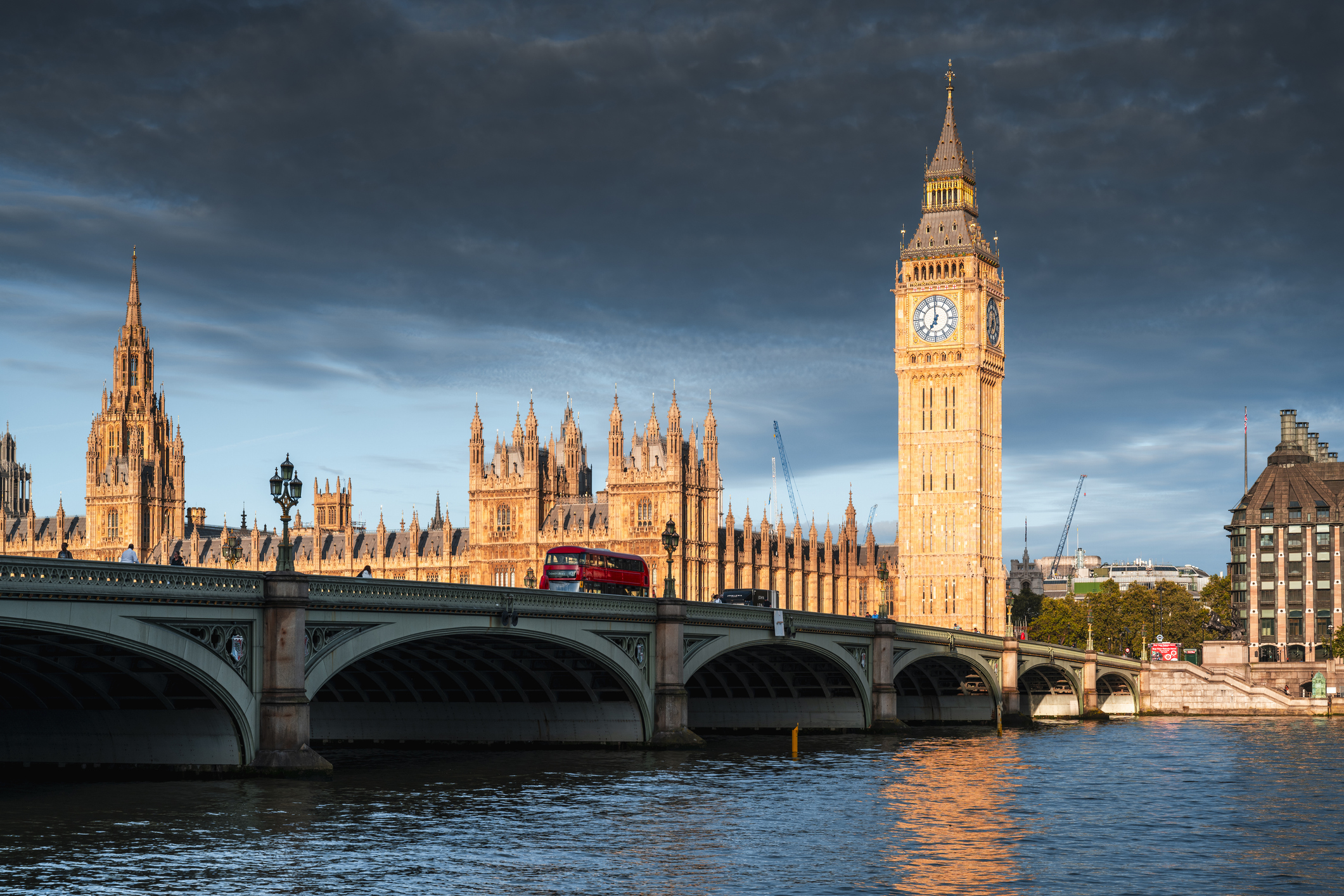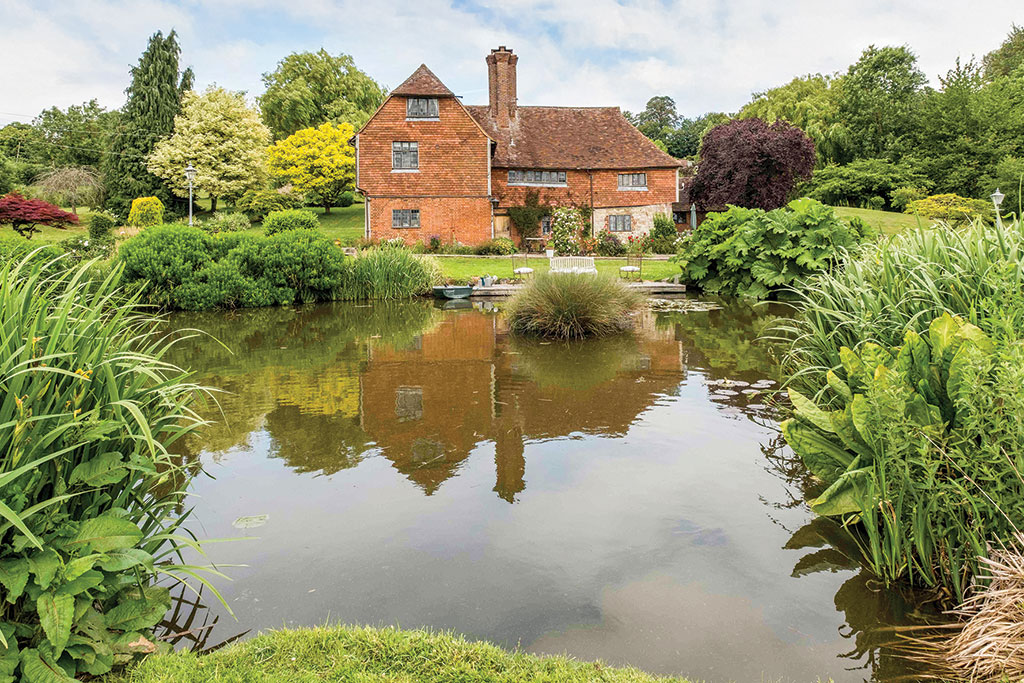The Palace of Westminster is falling down
The Palace of Westminster is in need of repair, but the bill is prohibitive, says Simon Wilson

What’s the issue with the Palace of Westminster?
British democracy is falling apart. All too literally. Everyone agrees that the Palace of Westminster – which houses the House of Commons, the House of Lords, Westminster Hall and more than 1,100 other rooms, large and small – requires an urgent programme of restoration and renewal that probably will cost tens of billions and quite conceivably take decades. For years, parliamentarians have been trying to put off making a decision about what to do. And the moment when they have to vote on it is fast approaching. The parliamentary estate is vast – the basement alone has a mile of corridors covering an area the size of 16 football pitches, and they are rammed with a century’s worth of obsolete piping and electrical wires, in addition to the barely functioning ones.
Are things that bad?
Probably worse. One intriguing statistic from the Restoration and Renewal project is that there are 1,057 “known” locations of asbestos within the palace. However, the “estimated” overall number of locations is 2,500. Much about the palace, it seems, has yet to be discovered. Rats are common; mice even more common – as are leakages, floods and sewage issues. It’s a UNESCO World Heritage site, visited by a million people each year and a workplace for thousands, and yet since 2016 there have been 45 fires. Five fire wardens now patrol the estate 24 hours a day. Right now it’s costing £2 million a year just to patch the building up as pipes break, wires fry and bits of masonry crash to the ground.
How old is the Palace of Westminster?
It’s mostly early Victorian, having been largely rebuilt from scratch after a fire in 1834, but some parts are far older. The site itself has a venerable history; the first royal palaces on the land were built by King Canute the Great and then Edward the Confessor in the 11th century. The oldest surviving part of the existing estate dates from that period: Westminster Hall, built between 1097 and 1099 under William II (though its distinctive hammer beam roof is three centuries younger, commissioned in 1393 by Richard II).
MoneyWeek
Subscribe to MoneyWeek today and get your first six magazine issues absolutely FREE

Sign up to Money Morning
Don't miss the latest investment and personal finances news, market analysis, plus money-saving tips with our free twice-daily newsletter
Don't miss the latest investment and personal finances news, market analysis, plus money-saving tips with our free twice-daily newsletter
The hall was the home of the first English parliament in 1265, when Simon de Montfort convened knights and representatives from cities and boroughs to air matters of national concern. Over the centuries it has been the scene of great state trials, including those of William Wallace, Sir Thomas More, Guy Fawkes and King Charles I.
The only medieval parts of the old building to survive the catastrophic 1834 fire – the worst in London since 1666 – were the Hall itself, the Cloisters of St Stephens, the Chapel of St Mary Undercroft and the Jewel Tower. A national competition was held to create a new purpose-built Houses of Parliament incorporating the surviving bits, won by Charles Barry and his now-iconic Gothic revival design. Barry’s 23-year-old assistant, Augustus Welby Pugin, designed most of the palace’s ornate interiors, carvings and furniture over the next few decades. Work started in 1840 and wasn’t completed until 1870. Ominously, it took 16 years longer than planned and cost £2.5 million, three times the original budget.
What needs fixing?
Everything. The whole estate is vulnerable to falling masonry and needs restoring, securing and cleaning. Crumbling stonework, cracked walls and ceilings, and extensive water damage from leaks and floods are merely the visible problems. The whole estate shares the same creaking water, electric, sewage and gas systems, most of which are interconnected across the buildings – meaning shutdowns for repair affect the whole estate. According to the official Restoration and Renewal unit, there are “also hundreds of miles of rusting pipework, obsolete electrical cables and gas pipes, and the giant, inefficient Victorian steam heating, all of which need replacing”.
What are the options?
The three main options under consideration are a “full decant”: clear everyone out and contractors get on with it. Or a “partial decant”: fix parts in turn, as happened in the 1940s after the Luftwaffe did their worst. Third option: rolling repairs while parliamentary life goes on. When Jacob Rees-Mogg was leader of the Commons, he professed faith in the ability of MPs to withstand a bit of “banging” going on around them. Parliament must meet in parliament, he reckoned. Alas, that third option is by far the most expensive and lengthy. One preparatory study found that a full refurb would take 28 years if the occupants get out, or 76 years if they stay.
That sounds ridiculous...
Unfortunately it’s not. This is a very long-term project of historic significance at the heart of the British state. One reason for the 20 years of procrastination is that parliaments last five years, whereas the work will take decades. Naturally, many MPs and peers don’t fancy seeing out their working lives in the conference centre across Parliament Square, or a repurposed building on Whitehall. Some are also fearful of taking such a long-term decision, and worry that if the nation’s legislators leave the palace, they might never get back in. As ten billion turns into tens of billions, or more, calls might well grow for a cheap, modern replacement elsewhere in the land.
How much will the refurb cost?
The most recent published costing dates from 2022, when the total costs were estimated at between £7 billion and £13 billion, taking between 19 and 28 years. New costings are due to be presented to parliament within months, for a vote on what route to take. Then the Restoration and Renewal Delivery Authority will begin its search for three strategic partners – covering design services, integration and construction respectively – by April 2026.
It’s hard to have confidence in any figures, though, given parliament’s recent record of inept procurement, overruns and blunders, says George Parker in the Financial Times. In July, it emerged that £9.6 million has been spent on a new entrance to the House of Lords, which does not work properly. Separately, the recent project to renovate the Elizabeth Tower (housing Big Ben) cost about £80 million – £51 million more than the original estimate. And the atrium at Portcullis House, which opened in 2001, is now covered in unsightly netting in case glass panels fall onto people below.
This article was first published in MoneyWeek's magazine. Enjoy exclusive early access to news, opinion and analysis from our team of financial experts with a MoneyWeek subscription.
Get the latest financial news, insights and expert analysis from our award-winning MoneyWeek team, to help you understand what really matters when it comes to your finances.
Simon Wilson’s first career was in book publishing, as an economics editor at Routledge, and as a publisher of non-fiction at Random House, specialising in popular business and management books. While there, he published Customers.com, a bestselling classic of the early days of e-commerce, and The Money or Your Life: Reuniting Work and Joy, an inspirational book that helped inspire its publisher towards a post-corporate, portfolio life.
Since 2001, he has been a writer for MoneyWeek, a financial copywriter, and a long-time contributing editor at The Week. Simon also works as an actor and corporate trainer; current and past clients include investment banks, the Bank of England, the UK government, several Magic Circle law firms and all of the Big Four accountancy firms. He has a degree in languages (German and Spanish) and social and political sciences from the University of Cambridge.
-
 How much should you be paying your financial adviser?
How much should you be paying your financial adviser?Financial Conduct Authority data shows financial advisers are charging up to 3%. Here is how you know if you are getting value for money
-
 Halifax: UK house price growth derailed by Autumn Budget build-up
Halifax: UK house price growth derailed by Autumn Budget build-upThe latest Halifax House Price Index shows values were hit by Autumn Budget uncertainty but there are higher hopes for 2026
-
 Big Short investor Michael Burry closes hedge fund Scion Capital
Big Short investor Michael Burry closes hedge fund Scion CapitalProfile Michael Burry rightly bet against the US mortgage market before the 2008 crisis. Now he is worried about the AI boom
-
 The global defence boom has moved beyond Europe – here’s how to profit
The global defence boom has moved beyond Europe – here’s how to profitOpinion Tom Bailey, head of research for the Future of Defence Indo-Pac ex-China UCITS ETF, picks three defence stocks where he'd put his money
-
 Profit from a return to the office with Workspace
Profit from a return to the office with WorkspaceWorkspace is an unloved play on the real estate investment trust sector as demand for flexible office space rises
-
 New frontiers: the future of cybersecurity and how to invest
New frontiers: the future of cybersecurity and how to investMatthew Partridge reviews the key trends in the cybersecurity sector and how to profit
-
 An “existential crisis” for investment trusts? We’ve heard it all before in the 70s
An “existential crisis” for investment trusts? We’ve heard it all before in the 70sOpinion Those fearing for the future of investment trusts should remember what happened 50 years ago, says Max King
-
 8 of the best properties for sale with wildlife ponds
8 of the best properties for sale with wildlife pondsThe best properties for sale with wildlife ponds – from a 16th-century house in the Ashdown Forest, to a property on Pembrokeshire’s Preseli Hills
-
 Why a copper crunch is looming
Why a copper crunch is loomingMiners are not investing in new copper supply despite rising demand from electrification of the economy, says Cris Sholto Heaton
-
 Where to look for Christmas gifts for collectors
Where to look for Christmas gifts for collectors“Buy now” marketplaces are rich hunting grounds when it comes to buying Christmas gifts for collectors, says Chris Carter